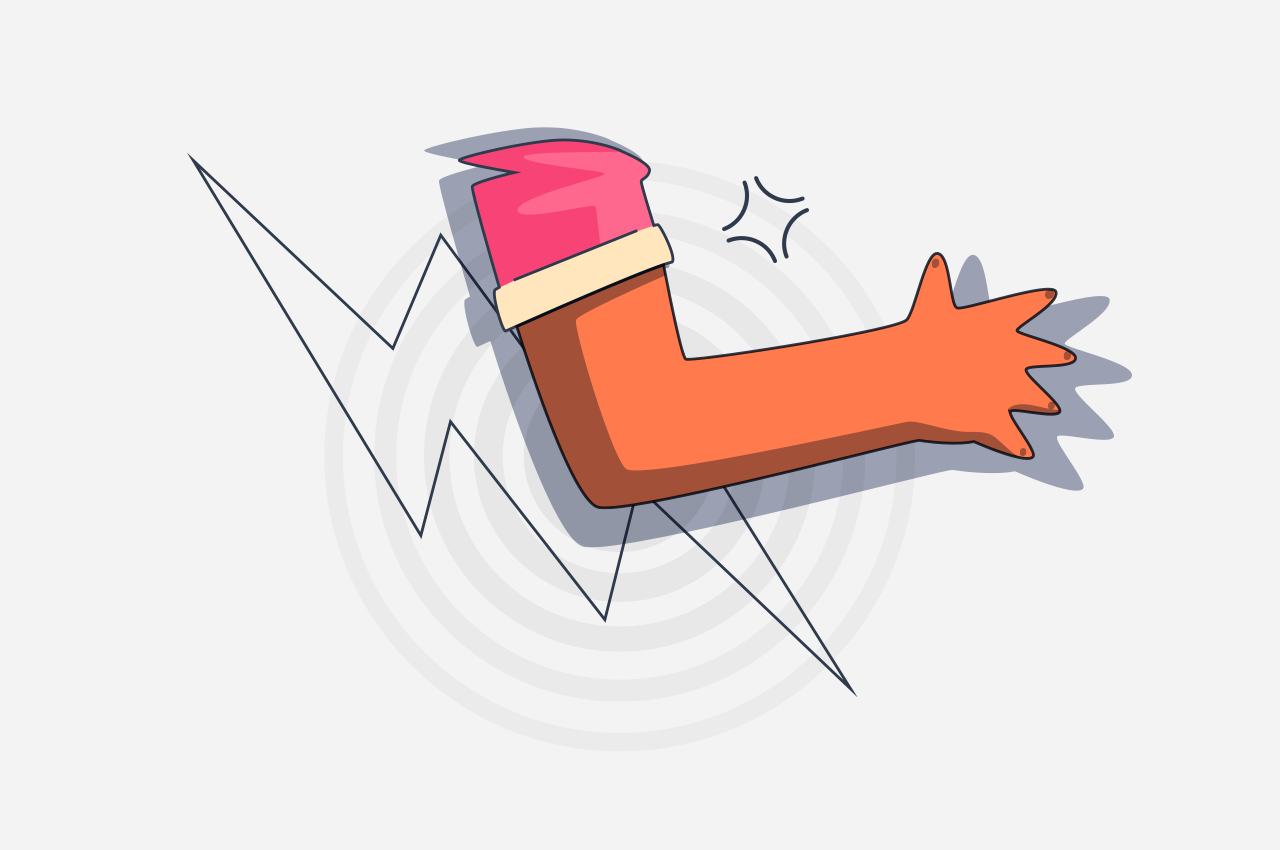If the outside of your elbow feels sore, tender or weak, you could have tennis elbow, even if you’ve never picked up a racquet in your life! Tennis elbow refers to pain on the outside of the arm, where your arm meets your elbow.
The inflammation may have an impact on the rest of your arm, which will make it painful to lift and grip things.
What causes tennis elbow?
Your elbow joint is surrounded by muscles that move your elbow, wrist and fingers. The tendons in your elbow join the bones and muscles together and control the muscles of your arm.
Tennis elbow is caused by activities that place stress on the elbow joint. If the muscles in your elbow are strained, tiny tears and inflammation can develop near the bony lump (on the outside of your elbow).
You may feel pain when you:
- Make a fist or grip an object.
- Lift something.
- Open a door or shake hands.
- Raise your hand or straighten your wrist.
Risk factors
- Tennis elbow develops because of repetitive activity which usually affects painters, carpenters, and plumbers. This also includes typing, knitting and raking.
- You can also develop it if you don’t warm up before an intense exercise, which can increase the risk of tissue damage.
- Using faulty sports equipment, like a tennis racket that’s too small or too big can increase the risk of developing tennis elbow.
Symptoms
- Elbow stiffness and aching in the morning.
- Difficulty gripping or holding items in the hand. You may develop muscle weakness in the wrist, palm, and fingers.
- An elbow and/or wrist that’s tender to the touch.
- Pain and/or stiffness in the arm that you often use.
- Pain, burning, or stiffness that gets worse over time.
- Pain that increases with activity but improves with rest.
- A painful burning sensation in your outer elbow. The sensation feels worse when bending or flexing the arm, or when you’re using a knife and fork.
- Pain, burning, and/or stiffness in both elbows and/or arms.
- Pain from the elbow that releases down the arm.
Treatment
In most cases, people who experience tennis elbow don’t need to see a doctor. Stopping repetitive activities and resting your arm may help ease the pain.
Home treatment includes:
- Over-the-counter (OTC) painkillers.
- Putting an ice pack or hot water bottle on the affected area to soothe the pain.
- Using an elbow strap to protect the injured muscle from further strain.
A family history of rheumatoid arthritis or neurological disorders (diseases of the brain, spine and the nerves that connect them) may also cause pain in the elbows and arms.
Through a physical exam and your medical history, your doctor will be able to diagnose tennis elbow. He may also suggest physical therapy that focuses on flexing and extending the elbows and wrists. This would include exercises that stretch the wrists and arms and improve your grip strength.
Be sure to check with your doctor or therapist to figure out when you’re ready to start therapy exercises for tennis elbow. This will help to ensure that the exercises don’t make any underlying conditions or injuries any worse.

